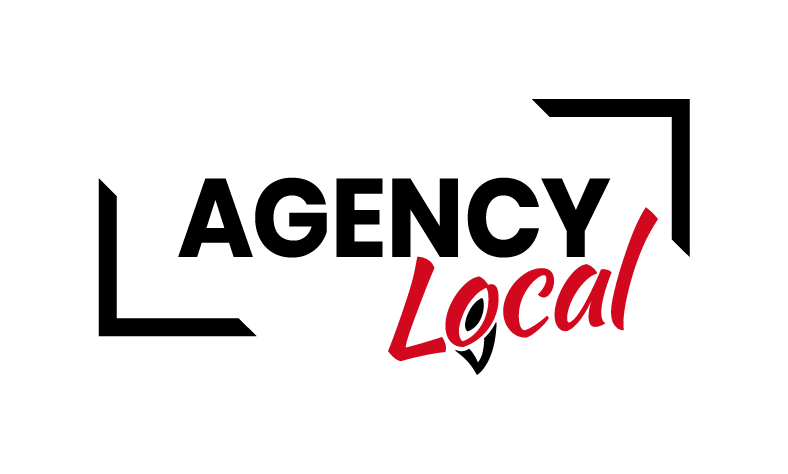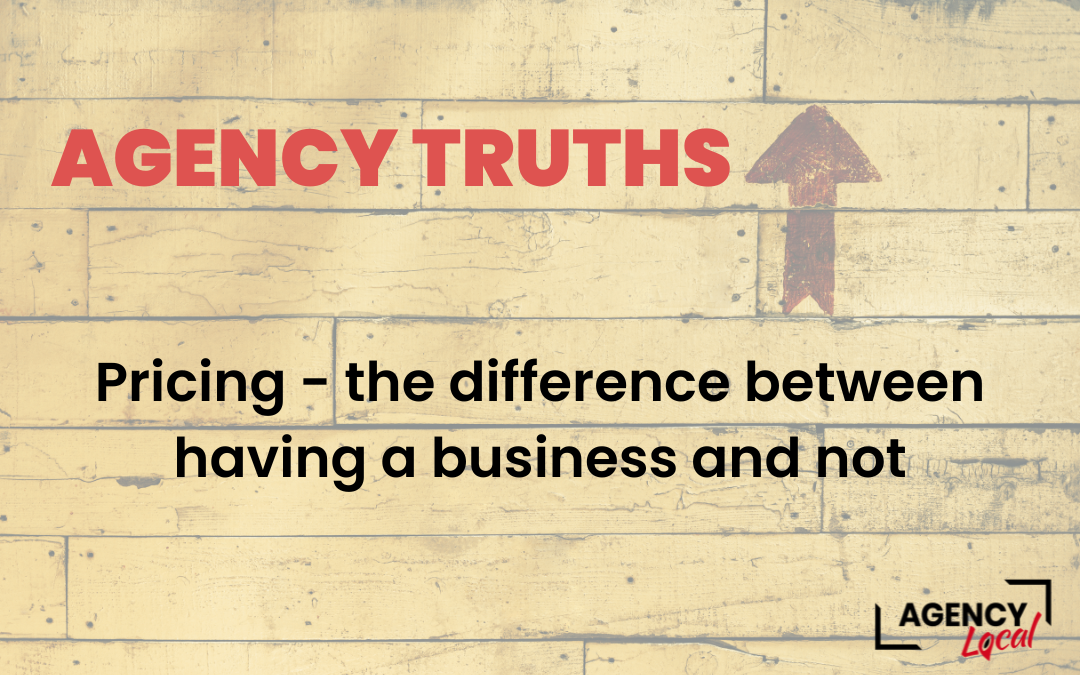Some truths about agency pricing
Pricing is one of the most important elements to think about in your agency business.
Why? Get your pricing wrong and you don’t have a business – simples.
It does not matter if you are a solo agency, a small agency or a bigger agency. Yes, some of the dynamics are different – solo businesses have less overheads to consider – however you charge incorrectly and your business is in trouble.
Charge too low and then:
- you are working for peanuts
- you don’t cover your costs
- you have no flexibility to do a bit more
- bottom line – you are not profitable
How do you work out what to charge?
This is the sixty four thousand dollar question!
The majority of agencies charge based on time. Why? Mainly because it is the simplest way to calculate a price. How long does this task take multiplied by an hourly rate / day rate.
Both these factors are open to miscalculation.
Estimates are often out – just the definition of the word means an approximation. Often this is taken by the customer as an absolute (mainly because it is presented this way). Estimates do not allow for scope creep unless you factor in a buffer amount – which then is perceived as being too expensive.
Hourly rate / day rate
Now here is a biggie!! There are many ways to calculate this.
One way is to take what you want to earn and divide the number of days you work (calculate this on client work which will not eb all of your time) = a day rate.
This is often tainted by what you perceive to be the Market rate – what are your competitors charging. Personally, I don’t give a whole lot of credence to this as you will always find someone to do something cheaper if they look hard enough.
Cost Plus
Also an estimation but for larger agencies this is a more robust way to calculate. This estimates the time involved to deliver the job, including all the people involved – senior people, account manager, technical delivery, project management etc – then add in proportined overheads – office costs, travel costs etc. This gives you a base cost.
Then add on the margin you want to make – 25% / 30% / 55% …. That is then the cost to the client.
Value based pricing
This is much harder to work out which is why most agencies do not price this way and do not work for all agency services. This is a pricing calculation based on the upside to the client – i.e. the value (or impact) you will be making.
For example if you are running a campaign that will result in an100 new sales and each sale is worth £5,000 profit to the client. That is £500,000 worth of impact to the client. So now you know this – why would charge X for campaign strategy, X for design, x for execution etc totalling say £8,000. Based on the customer upside you could charge £15,000 or £20,000 because the client will see the value that you are delivering and this is a fraction of the upside, however more importantly you have increased your margin by over 100%.
Understand your audience
This is a key determinant of any pricing calculation.
If your target audience is funded startup’s – you know they have money to spend on start ups. If your target audience is small provincial cake shops then their budgets will be a lot smaller. Both need branding, both need websites, both need social etc however you will not be able to charge the cake shop the same as the funded start-up.
This is where the value of niching comes in however that is another whole topic. Knowing your audience’s ‘propensity to buy’ does have an influence on what you can charge.
Presentation of pricing
There are so many ways to present your costs and pricing, in fact there is a whole psychology of pricing that can come into play.
It also depends on your overall approach to pricing during the whole sales process. If you don’t talk about pricing until the end and your costs are way off the mark – then you have wasted a huge amount of time.
Qualify budgets up front – you may not get to know an exact budget however if you understand what rough areas you are working in then you can discover if you are aligned.
The easiest way is to present a ‘project cost’ – a price for the overall job. Presenting a total price can often look expensive. Breaking it down into different elements can make it clearer to the customer what makes up the total. However it does open you up to negotiation – “we don’t need a project management cost – we will be managing the project internally”.
Offering different payment terms can be an effective way to present pricing. “It will be a total of cost of £20,000 however we can spread the payments over 6 months” this often helps fit in with businesses cash flow and makes, what seems to be a large cost upfront, much more manageable. Be creative!
Productise services
This can be a very effective way to present pricing. This can also help with the value pricing proposition as it can clearly demonstrate what additional value you get at a higher price.
Set up comparison tables for your product – the Gold Silver Bronze strategy. Gold is the full ‘bells and whistles’ and priced extremely high. Bronze is entry level and priced accordingly. Silver is the most attractive (highest value for the price) and is the one you want people to buy and psychologically is the one that everyone chooses.
These ‘products’ can be used for discussion to really determine what the client wants. Then you work out a specific ‘special bundle’ just for that client.
It’s not all about pricing!
Although this article is based on pricing – it really is not all about pricing when a client chooses to do business with you.
People buy from people – relationship and trust are vital factors in business development – and elements that you cannot put a price on. If you build strong relationships and the prospect trusts you then pricing becomes less important. They have bought into you and not just buying a product or service.
Your brand is essential – the famous quote “your brand is what people say about you when you have left the room” is so important. It is what others say about you – references, testimonials, case studies, referrals are all crucial.
Pricing is only one dynamic. For example if a prospect has an ‘urgent’ job to be done but does not want to compromise on the quality of what you deliver – then price becomes immaterial.
———————————-
Pricing is a huge area and one that needs special attention. If this has stimulated you think about your pricing and how you present it and you feel it has raised more questions than solutions (an understandable outcome!) then I would be very happy to discuss this with you in more detail.

